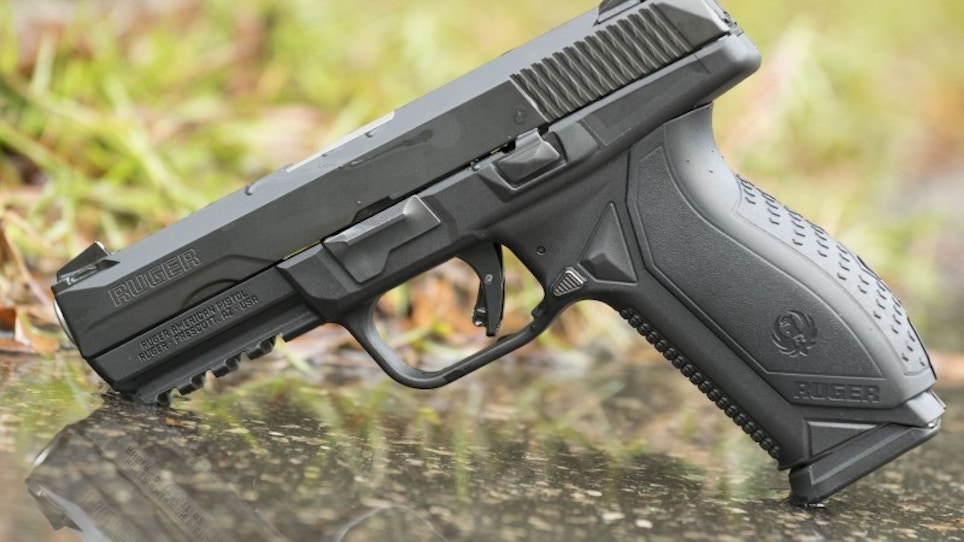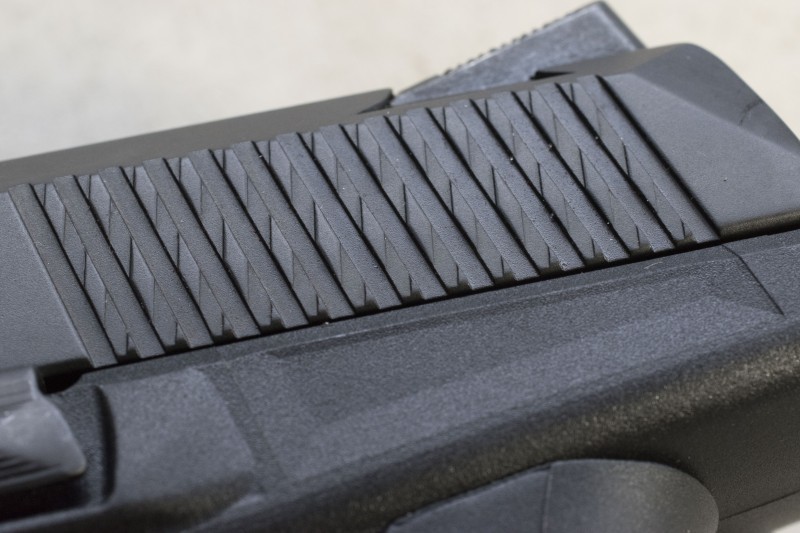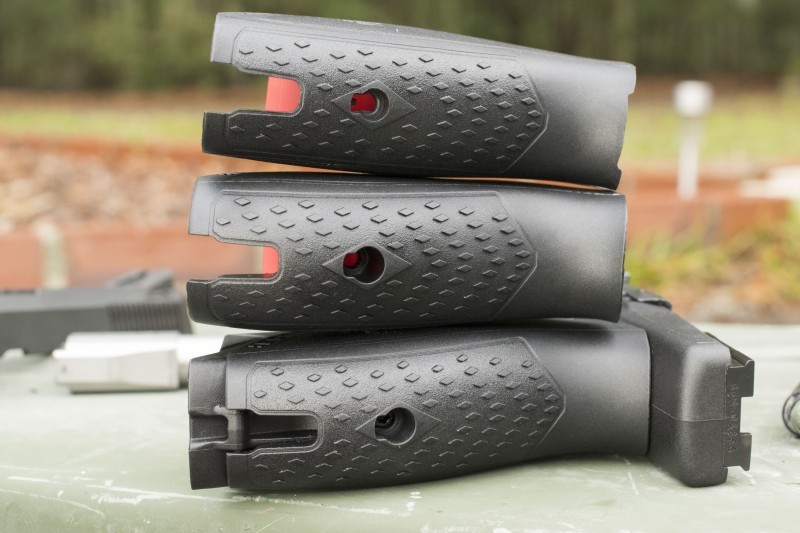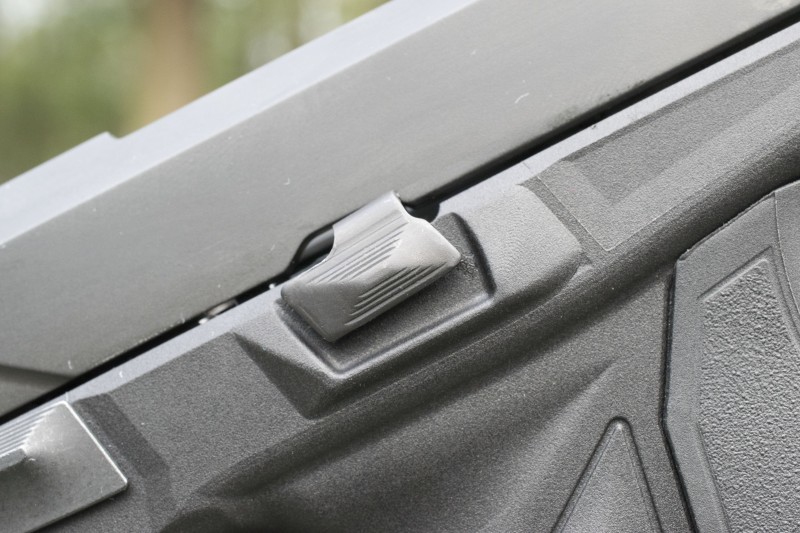The Ruger of yesterday is dead. Gone are the overly derivative designs of the 1980s and the stagnant rifle development surrounding the Mini-14. Now the little ranch rifle comes in suppressor-friendly 300 Blackout, and Ruger offers not only an AR-15, but also a long-range precision rifle.
Following in the footsteps of the rifle’s clandestine announcement comes the newest product from Sturm Ruger, the Ruger American Pistol. Available in both 9mm parabellum and .45 ACP, the new locked-breech, striker-fired semi-automatic handgun feeds from a detachable box-type nickel-teflon-coated magazine containing either 17+1 rounds of 9mm or 10+1 rounds of .45.
Ever since the last firearms scare that drove the already profitable company to new economic heights, the managers at Ruger have been busy. While many companies simply purchased more machinery or raw materials to churn out new products, Ruger instead invested in a new facility.
The company’s exodus from gun-hostile New England to firearms-friendly North Carolina, demonstrates Ruger is truly willing to put the company’s money where its mouth is. All indications are that Ruger wants to use profits to improve its products and offer new firearms instead of simply popping out as many AR-15s as possible.
Now while many companies are struggling to fill backorders, Ruger is able to innovate and explore regions of the firearms market it could only dream of in the past. So how does Ruger prevent itself from falling into R&D hell or releasing a product before it has been properly venerated?
Two big reasons.
The first is developing designs that are borderline conservative. By that I mean guns that operate on proven principles that innovate in specific areas while relying on the strengths of that particular company. For Ruger this means incorporating aspects of past successful designs, while trimming away portions shooters weren’t impressed with.
The second way is by testing new products to the point of exhaustion. For Sturm Ruger this means putting every single design through 50,000 rounds of testing internally before releasing to the public. What’s interesting about Ruger is that it only use employees from other areas of the business to test the guns. This gives the company a tremendously varied sample population since not everyone who works at Ruger is an IPSC champion.
Additionally, Ruger only announces a design when it’s ready to ship. While this seems common sense, it would actually be detrimental to smaller companies who might be lacking in capital.
This is because small companies, especially new ones, don’t know how well they’ll be embraced by the shooting public. The same cannot be said of Ruger with its dedicated fan base similar to Apple fanatics in their unwavering support of the company. Since Ruger doesn’t need to build up market hype, it can release a new design when it’s ready, not when the company needs an influx of investors.
In this vein, the Ruger American Pistol is a polymer-framed semi-automatic pistol available in 9mm and .45 ACP. Aesthetically, it’s similar to the SR9 that precedes it, though the design is different enough to have few, if any, interchangeable parts. This unfortunately includes magazines, which would have been a great boon for owners of the older SR9 and SR45 handguns.
One thing keen-eyed readers should have noticed in the above paragraphs is the absence of a .40 S&W model. While I can only speculate as to why, I would presume because the caliber brings little to the table in terms of ballistic performance over 9mm, while suffering a tremendously more expensive round with increased recoil. In simpler terms, given that Ruger financial decisions are market data driven, it’s fair to assume few enough shooters bought the .40 S&W SR40 to warrant the caliber’s return in the updated handgun.
While the exclusion of a .40 S&W model represents the most obvious difference between the SR series and the American Pistol, there are some key aspects that separate the two lines.
The American Pistol includes features like a dovetailed slide equipped with genuine Novak Low Mount post and notch 3-dot sights. What makes these iron sights unique is their streamlined design, which makes them ideal for concealed carry use. Shooters looking to “clear leather” in a hurry don’t want to accidently take their holster with them. This makes the pistol a solid choice for competitive shooters and those who wish to open carry the full-sized handgun.
Another improvement is the addition of a modular backstrap system that includes three different-sized options. Shooters like myself with small hands are often restricted to certain slimmer designs due to the inherent girth of double-stack, polymer-framed handguns. While most of us are able to run ill-fitting designs without issue, it does make attaining proficiency challenging.
In testing, the smallest size Ruger backstrap was a hair too small for my hands, while the medium fit great. My petite wife, who normally prefers single stack handguns because of her small hands, found the small backstrap a perfect fit. As a point of reference, the large-sized backstrap is about the same size as the grip on a third generation Glock 19. So if a shooter enjoys that pistol, they’ll find the Ruger equally fun.
But not everyone is thrilled with the Ruger American Pistol’s grip. Some reviewers have mentioned the area under the trigger guard scrapes up their knuckles during firing. I personally fired around 500 rounds through my test Ruger and my hands were no worse for wear. My advice is to visit a gun shop near you and check one out first hand.
Since it’s unlikely your retail operation would allow prospective buyers to shoot brand new guns, the next best thing is to have them grab the gun’s grip as possible. If a customer detects any particularly painful spots on the grip, the gun isn’t for them. While not as definitive as firing the handgun, it might prevent a shooter from making a pricey mistake.
One area of note on the grip, the front and back straps feature aggressive, omni-directional diamond checkering to provide a more positive grip surface for shooters. While largely unnecessary for either a 9mm full-sized pistol or on a static range, this pattern is excellent for weapon retention when it or the shooter’s hands are wet or oily.
Another interesting aspect of the design is the inclusion of an ambidextrous magazine release and slide lock — an indication that Ruger happily caters to Southpaw shooters. The release lever itself is trapezoidal like a miniature version of the step-pyramids of ancient Egypt.
While somewhat peculiar in appearance, it’s actually an ingenious addition to the handgun. The unusual shape serves two functions: it’s very tactilely unique, so shooters can find it in low or zero light conditions simply by touch. The other benefit is that the raised, yet flat area is incapable of snagging on clothing or holsters no matter what direction it’s drawn in.
During my time running the Ruger, I was unable to cause the handgun to malfunction by limp-wristing or feeding it underpowered ammunition. The design thus far has been functionally flawless and accurate enough for competition, law enforcement or home defense use.
In fact, when fired from a rest, the Ruger produced sub 2-inch groups at 25 yards with quality ammunition. Shooters who don’t feed their pistols a steady diet of Hornady Critical Defense and Federal Hydra-Shoks will be pleased to know the gun produced only slightly larger groups of 3.5 inches with steel-cased bargain ammo. While certainly not match grade, that’s more than sufficient for plinking at the range or self defense.
This is in no small part thanks to the Ruger’s trigger. A bladed safe-action type metal double trigger represents the only safety on the handgun. My trigger scale measured around 6 pounds, but with so little creep, it felt much lighter.
Forward of the trigger, the American Pistol features a railed dust cover ideal for mounting a tactical light or laser aiming device. The rail is made of polymer and integral to the handgun’s frame. It proved a solid mounting point for all accessory testing, including several Streamlight products whose lasers held zero once tightened securely to the rail.
With an MSRP of $579 for either the 9mm or .45ACP models, the Ruger American Pistol represents a great bargain and another excellent addition to the polymer semi-automatic pistol market. Some might bemoan that it’s simply another striker-fired pistol, but Ruger enthusiasts finally have an answer to Glock’s cash cow.
Ruger American Pistol 9MM Specs:
Capacity: 17+1
Slide Material: Stainless Steel
Barrel Length: 4.2 inches
Grip Frame: One-Piece, High-Performance, Glass-Filled Nylon
Grips: Ergonomic Wrap-Around Grip Module
Slide Finish: Black Nitride
Width: 1.4 inches
Sights: Novak LoMount Carry 3-Dot
Weight: 30 ounces
Overall Length: 7.50 inches
Height: 5.60 inches
Grooves: 6
Twist: 1:10 inches RH
MSRP: $579









